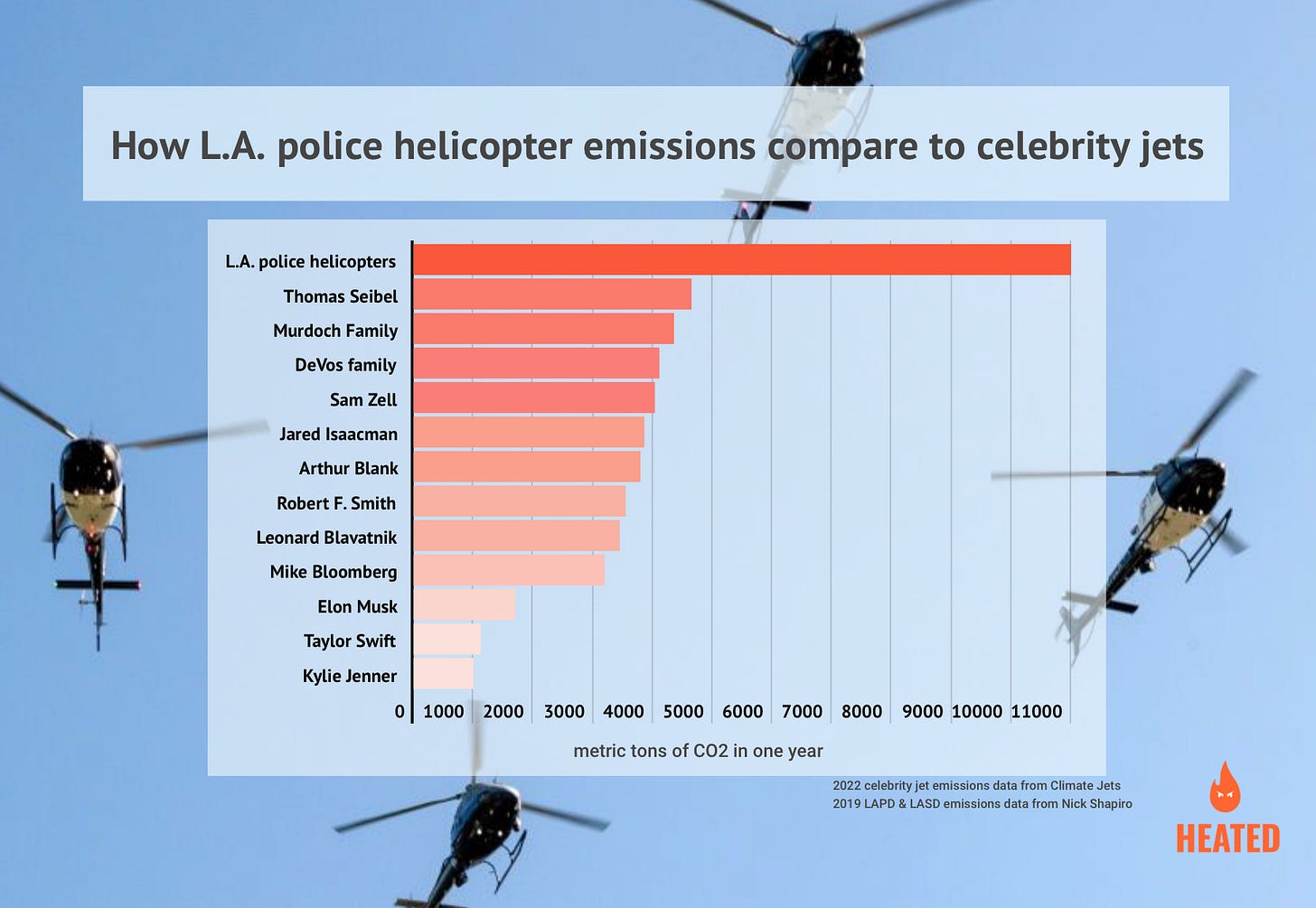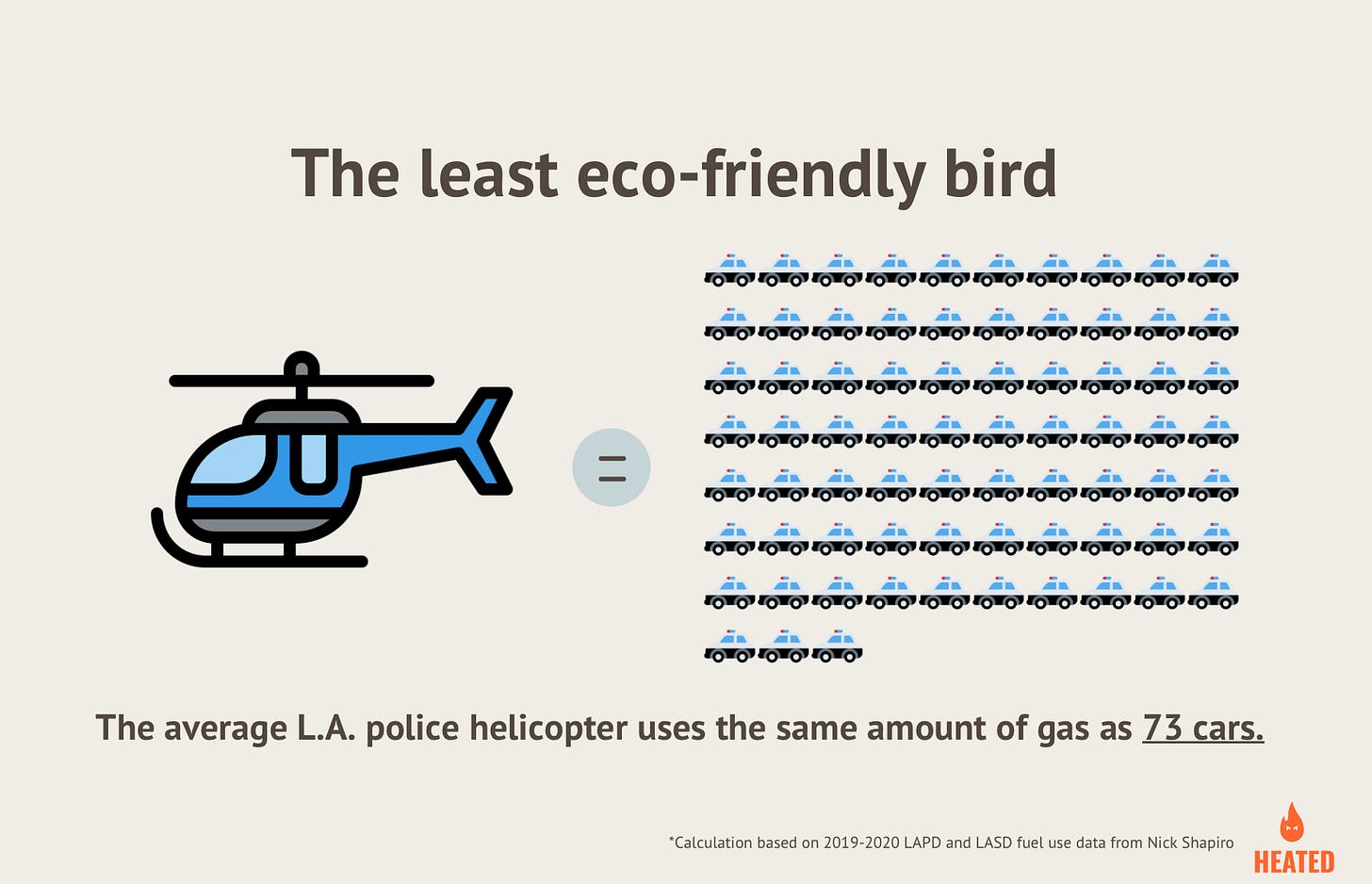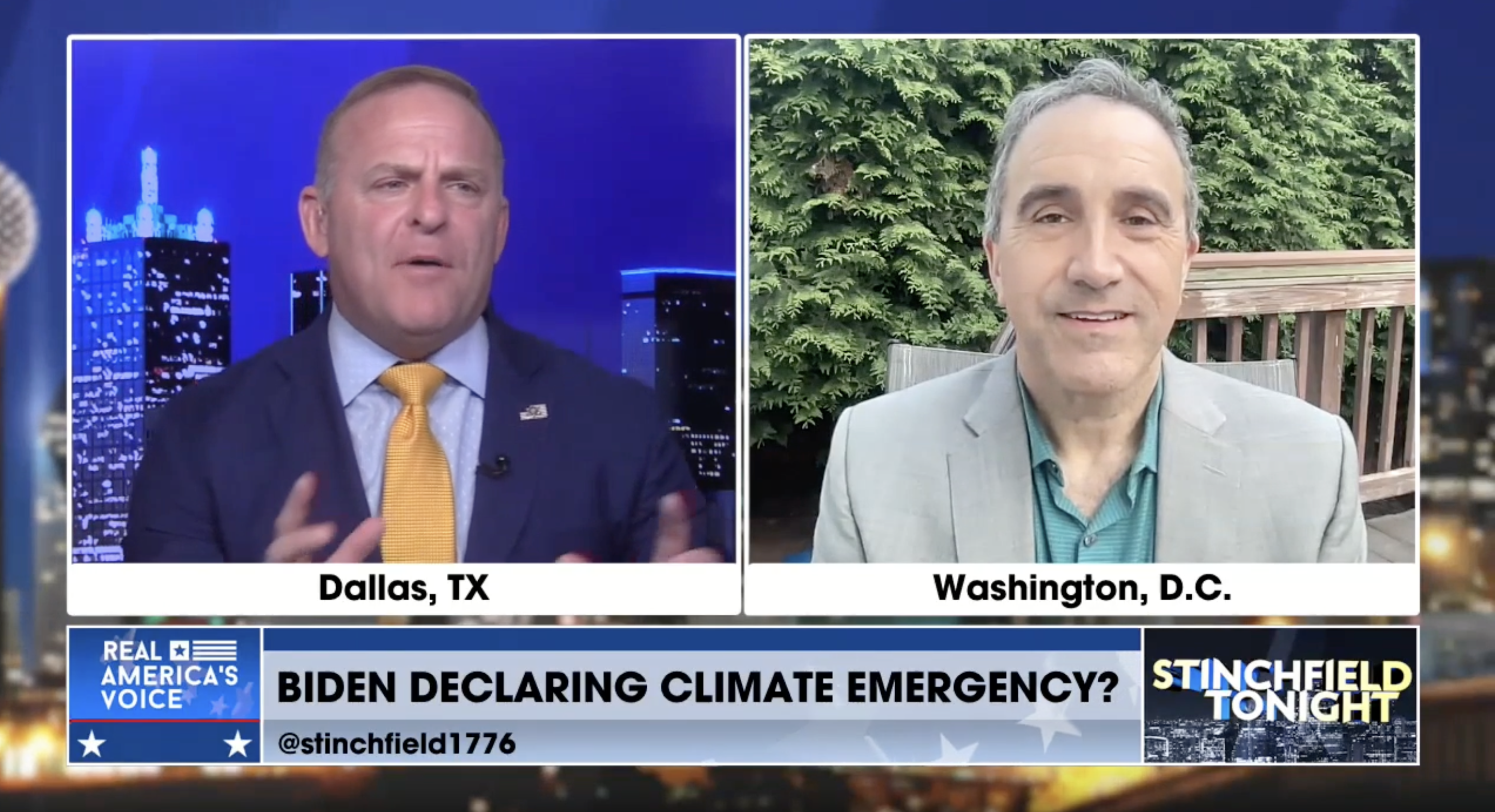For their unnecessary joy rides over Los Angeles, celebrities have been called “climate criminals.”
What, then, should we call the Los Angeles police? pic.twitter.com/FQBhBAiDaW
— Emily Atkin (@emorwee) April 14, 2023
https://heated.world/p/the-climate-cost-of-las-police-choppers
For their unnecessary joy rides over L.A., celebrities have been called “climate criminals.” What, then, should we call the L.A. police?
Shapiro’s preliminary calculations show that, from 2019 to 2020, L.A. law enforcement helicopters burned more than 1.2 million gallons of fuel, thereby releasing approximately 11,100 metric tons of carbon dioxide into the atmosphere.
That’s more than double the emissions from number-one-emitter Thomas Siebel’s private jet last year; five times more than Elon Musk’s; and nearly 11 times more than Taylor Swift’s. Kylie Jenner would have to repeat her notorious 17-minute flight 8,795 times to match the yearly emissions of L.A. police helicopters. The average private-jet-less American would have to drive their car around the Earth’s circumference 873 times.
The annual emissions from L.A. police helicopters may not be huge in the grand scheme of the world, but that doesn’t mean they aren’t important, said Andrew Dessler, a climate scientist at Texas A&M University. The fact is, 11,100 metric tons of CO2 per year is “a surprisingly large number for a law enforcement helicopter fleet,” Dessler said—just like Kylie Jenner’s emissions are surprisingly large for an individual human.
For their unnecessary joy rides over Los Angeles, celebrities have been called “climate criminals.” What, then, should we call the Los Angeles police?

…
…Are they really worth the annual climate impact of nearly a dozen Kylie Jenners?
The LAPD and Sheriff’s Department each say they are. The LAPD’s budget says its helicopter fleet has the potential to actually reduce greenhouse gas emissions, because one helicopter can do the job of four police cars. Ewell similarly claims that helicopters help the Sheriff’s Department cut down the number of vehicles needed for a pursuit from 20 to four.

Over the course of one year, the average L.A. police chopper uses the same amount of fuel as 73 passenger vehicles. Graphic by Emily Atkin.
Aerial police surveillance is a climate justice issue, and yet another example of an environmental health hazard disproportionately affecting Black and brown communities.
…
…police fly lower and more often over Black neighborhoods; the noise impact of helicopters on people’s health; and the Sheriff’s Department’s response to their pilots calling themselves “ghetto birds.”


